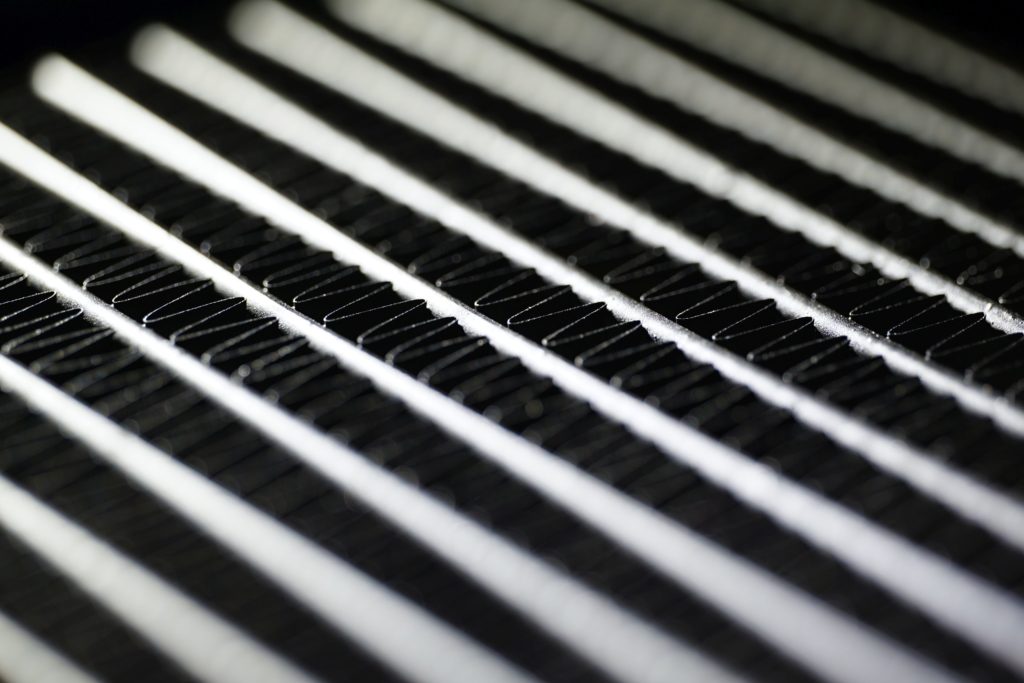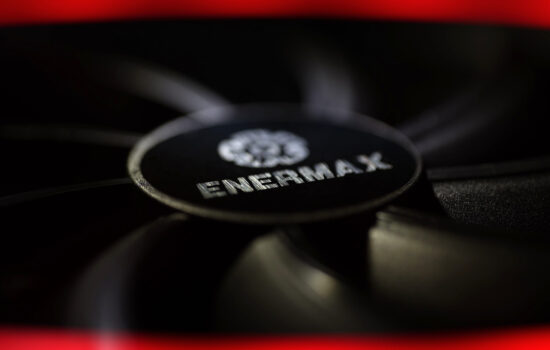A bit of physics or the treacheries of fan tests
No one, no one at all, can claim based on any tests that one fan is a touch more or less efficient than the other for radiators or cooler heatsinks in general. Technically it’s impossible, and not just because of the huge design diversity of fins. However, after in-depth analyses, one can work one’s way to comparisons that have a high predictive value with a certain amount of universality.
In the first part of the Static Pressure vs. Airflow series, we looked at an overview of the quantities that we so often operate with. This is mainly to support the understanding of the “static pressure” quantity and that airflow velocity is expressed by dynamic pressure.
Now we’ll move on a little further, namely to the fact that to claim that describing any fan as a more efficient option on a radiator is a bold claim riddled with disclaimers. We’ll pick up this topic by asking, “how relevant are fan tests to a real-world environment?”. To find the answer, we need to follow the airflow traces through the entire cooling system, that is, from the intake to the exhaust of a cooler.
As you all know, a fan is a source of turbulent airflow. And that’s a good thing. “Desired” turbulence that mixes warm air molecules with cold ones (thus increasing the efficiency of the heatsink flow) is one thing. In addition to efficient turbulence, there is also turbulence around the fan which reduces efficiency. We are talking about microturbulences or parasitic currents that are created both on the fan blades and on the sharp edges of cooler fins.
The reduction of unwanted microturbulence on fan blades is often mentioned by fan manufacturers as well. This is in the context of various protrusions, cut-outs, in short “accelerators” that partially laminarize the parasitic vortices at the intake. The higher the efficiency with which this is handled, the more air can flow through the rotor, and even at a lower noise level. These elements are always at the front of the blades and are heavily involved in determining the ranking of the most efficient fans. That is to say, those that achieve the highest airflow at a certain noise level.
The cooler heatsinks also have aerodynamic modifications of this type. Unwanted microturbulence is created on their fins as well, when cutting the air, which reduces efficiency. That is why there are various cut-outs (teeth, waves) on the heatsinks, behind the fan rotor. These play a significant role in how much the mechanical resistance between the heatsink/radiator and the fan increases and how much the noise level increases due to it. And the resistance is always massive, as it goes against the natural trajectory of the airflow motion. This is accompanied by a high concentration of microturbulence, which is generated at sharp edges. It is also because of these that the increase in noise level is always so significant. But back to heatsinks, fans and their interaction.
In order to achieve the highest possible cooling performance at the lowest possible noise level, the aerodynamic elements must also cooperate as closely as possible to suppress parasitic microturbulence. But what happens when you take two coolers that are brilliantly optimised in this respect and swap their fans? They won’t be so brilliantly optimised anymore. In other words, a fan like the SilentiumPC Fluctus 120 PWM from the Fera 5 may not increase the efficiency of the Noctua NH-U12S’s heatsink in the same way that a Noctua fan may not increase the efficiency on the SilentiumPC cooler’s heatsink. This means that if different heatsinks are used across different methodologies, the fans will perform differently, they will end up in a different rank.
Even testing all the fans that exist on all the heatsinks that exist would not be enough to make an objective evaluation. There is also the issue of different heat loads, which also affect the correlation of the results. At low loads the results are confounded (the differences between the temperatures are too small), at high loads the coolers tend to be unstable. With a “weaker” fan, the overall cooling performance can drop faster than with a “stronger” one, and this is not determined by the fan characteristics, but by the heatsinks itself. And we haven’t yet taken into account the influence of different cases, the infinite number of system fan settings or the consistency of the ambient environment. The latter, if perfect (tests would always be run at a constant temperature of the air into the cabinet), the author can state that he achieved such or such results, but with the emphasis on the fact that it is a result in one of an infinite number of constellations.
However, such introspection often does not happen, people take these tests too seriously and thus fall victim to mystification. Often unintentional, based on the test authors’ ignorance, but this does not change the fact that, for the reasons mentioned above, the predictive value of fan tests in a real-life environment is very close to zero. I’d like to note that even so, the gross differences between the most and least efficient fan will show up, but unfortunately when you discover results that present the Arctic BioniX F120 versus the BioniX P120 as the more efficient option on a radiator, that may not be the case either. This scenario (F120 above P120 on an obstacle) is in fact physically impossible under any circumstances.
So on what basis do we judge that one fan will be more efficient on a radiator than another? The first sentence from the introduction applies to us too – no one can say for sure what is a hair more efficient and what is slightly behind. So it’s always just a matter of getting closer to results that will scale, give or take, across all combinations of coolers and heat loads. We’ve neatly gotten rid of this variable (varying heat loads). But then there’s the effect of different radiator designs. This is also suppressed in our tests.
Let us explain why we are not afraid to claim that our conditions are well replicable in practice. But first we must pause a little on one point. Among the results of our tests you will find “Airflow through a thinner and a thicker radiator” and „Static pressure through a thinner and a thicker radiator“. The measurements of airflow through a radiator tell us how effectively the fans contribute to system cooling when installed on a radiator. It’s a bit tempting to think that this will also tell you about radiator cooling, but then again it’s a bit more complicated than it seems. In addition to the nature of the macroturbulence, the intensity of cooling of a radiator is also determined by the total pressure applied onto it. And that, just by the very nature of the radiator having a different open cross-section than the wind tunnel measuring point, is difficult to record even if there is no pressure loss. But there is some, due to imperfections in the individual joints and ‘leakage paths’.
Pressure doesn’t weaken only in an environment with perfectly smooth and sealed walls. These are not present in radiators and, moreover, in tower heatsinks there are gaps along the body and the thicker the heatsink is, the greater the pressure drop along the airflow path. And at the end (of wide fins, typically Scythe Ninja radiators), only a fraction of the original pressure remains. So the total pressure is different at different points in different coolers. This is determined by their design. Thus, there is no way to capture it at the point of such an obstacle as heatsinks and radiators of coolers. What is possible, however, is to measure the static pressure in the liquid cooler radiator. Its advantage is that it is sealed at the sides and so the pressure does not drop significantly.
To measure static pressure across through a radiator means to do it at zero airflow (the tunnel is closed and no air passes through it) and yet to add resistance of the radiator to make it harder for the fan sounds like madness that is both insanely far and very close to real-life practice at the same time. Very close in that the ranking of individual fans scales with the average ranking of fans in various practical situations. Over the last year, maybe year and a half, we have tested various coolers (including tower coolers) with various fans in with various thermal loads as part of our internal tests, and the average of the individual fan placements scales quite accurately with the results we report as “Static Pressure through radiators”.
Of course, there are some deviations here as well, but we are within the relevant range. It may be true that a fan that we present in the graphs in a one higher position may be, on the contrary, a little weaker on your heatsink, but never fundamentally so. And when it comes to selecting fans for radiators whose fin arrangement is not that different (as with tower heatsinks with heatpipes), this is also an extremely accurate indicator, which in practice will correspond to your situation.
The purpose of this article was not to discredit the authors of the “real world” fan tests, nor to discourage them in any way. However, we feel it is important for all those interested in fans to be aware that careless interpretation of conclusions is an extremely fertile ground for the growth of misinformation.
English translation and edit by Jozef Dudáš














